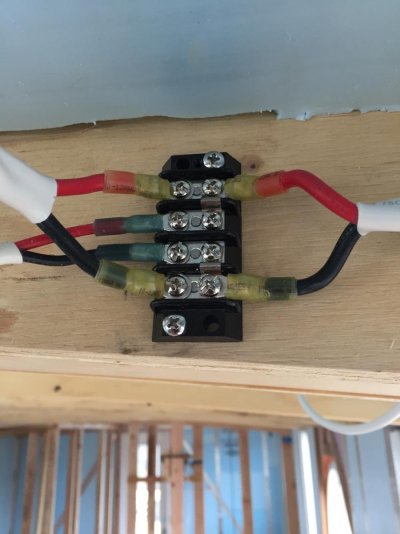OldToby
Veteran Member
- Joined
- Aug 10, 2015
- Messages
- 52
- Location
- USA
- Vessel Name
- Mary Elyse
- Vessel Make
- 1964 Boston Whaler Eastport
I’m installing new wiring in the rebuilt cabin of my boat, and I plan to coat connections with dielectric grease before closing the wiring in. Should I also be applying some sort of Loctite to prevent screws on the distribution blocks from backing out?

